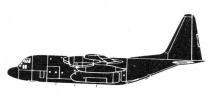Incident Overview

Description
The aircraft should depart from Stockholm/Arlanda on a cargoflight to Dubai. The crew had flown to Stockholm as passengers earlier in the evening. The aircraft, a Boeing 747, was parked on the southern cargo ramp area. Due to delayed flights into Stockholm, the crew arrived late to the aircraft. Further delay came up due to a misunderstanding concerning the time for closure of the main runway at Arlanda, which caused operational problems regarding planning of the flight. A number of companies were contracted for services in connection with the flight, i.e. ground handling, technical service, operational information and cargo handling. As the aircraft was parked with the nose in at the gate, intention was to perform a push back with a push back vehicle connected to the nose wheel at the aircraft. One technician was present for assistance in connection with engine start and push back. Two people were present from the ground handling company, one truck driver under training and his supervisor. After signal from the pilots the push back was commenced in a right turn at the same time as the engines were started. After termination of the push back the parking brakes were set and the technician told the pilots that the push back vehicle should be disconnected and removed. The pilots read the checklist after engine start. The check list did not contain any point concerning “clear signal”, i.e. a sign in form of thumb up from the technician, implying that all is clear for the aircraft to start taxiing under own power. About 45 seconds after the message from the technician that the push back vehicle should be disconnected, the aircraft started to taxi without any “clear signal”. The vehicle had been disconnected from the nose wheel and backed a bit so that the driver could change to the forward driving position. The vehicle was not backed far enough to get into the pilot’s field of vision. The driver and the technician had to run in order to be safe, and the left inner engine on the aircraft hit the push back vehicle. At the collision the engine was substantially damaged, when the upper corner on the vehicle teared up the cowling and caused damage to engine systems. The aircraft taxied a short distance before the damaged engine stopped. At the time of the accident – which occurred 03:33 in the morning – the pilots had been awake 18-20 hours. The aircraft leaked jetfuel from the damaged engine. Alarm to the Fire and Rescue service was not made until 57 minutes after the accident. The accident was caused by inadequate checklists for the pilots in respect of checking that an all clear signal had been received. A probable contribution was that stress and fatigue factors limited the concentration abilities of the pilots.
Source of Information
https://shk.se/download/18.2d6f089b18faca29dc81cfb8/1699873289465/rl2008_06e.pdfhttps://shk.se/download/18.2d6f089b18faca29dc81cfb8/1699873289465/rl2008_06e.pdfPrimary Cause
Inadequate checklist procedures for pilots regarding signal verification, specifically the failure to establish a clear signal indicating all is clear for the aircraft to start taxiing under its own power.Inadequate checklist procedures for pilots regarding signal verification, specifically the failure to establish a clear signal indicating all is clear for the aircraft to start taxiing under its own power.Share on:





